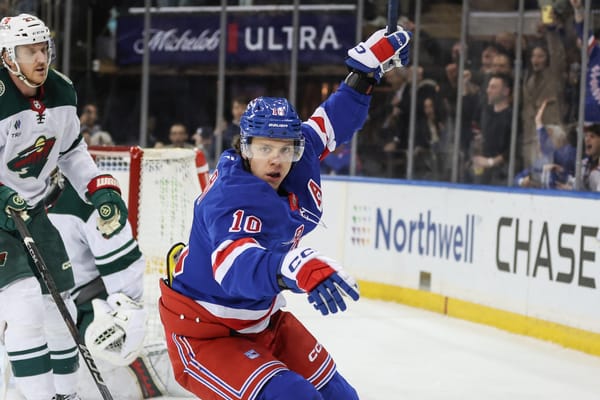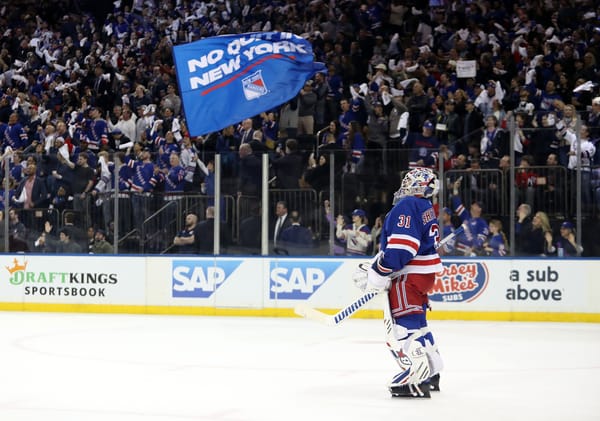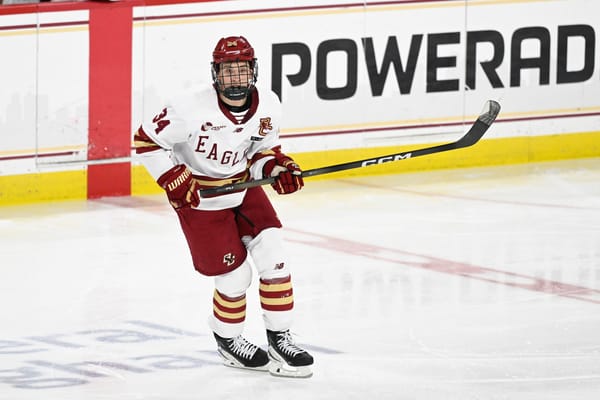What Have We Learned? A Look at Games 4-6
The New York Rangers haven’t had the best start to the 2017-18 season. Unfortunately, since their first three games, they’ve followed up with three straight losses. It’s still early in the season, so it’s not quite time to panic, but that 1-5 record and second-to-last standing in the league isn’t too encouraging.
A successful season requires a full team effort – from the forwards, defensemen, goaltenders, and coaches – but they’ve yet to have to that in their first six games. In the last three games, there have been number of weaknesses that have stunted their chances.
One weakness has been the defensive deployment. Last Sunday the Rangers took a questionable approach against the Canadiens, dressing 11 forwards and seven defensemen. Tony DeAngelo was limited to 3:45 total ice time, likely in an effort to hold him accountable for a turnover that resulted in a goal against the game prior. If that wasn’t enough, he was also scratched on Tuesday against St. Louis and Friday in Columbus.
While the coaches may have felt the need to hold him accountable for that costly turnover, holding him out of the lineup for essentially three games may have been excessive – especially since the replacement options don’t have as much upside.
Brendan Smith was also a scratch for his second straight game on Tuesday, likely due to his struggles in the first two regular season games. Head coach Alain Vigneault and the Rangers aren’t always transparent with their lineup decisions, so we’re left interpreting his “coach speak” and have to assume that’s why Smith was held out. If he was benched in an effort to hold him accountable for those struggles, it’s an encouraging change of pace, as Vigneault hasn’t always followed this same standard with veterans. The key to setting the standard though, is consistency, and unfortunately, it’s already clear that’s missing.
Nick Holden and Steven Kampfer both debuted Sunday against Montreal, and neither inspired much confidence with their performance. If an accountability standard was being set, then neither should have been in the lineup against St. Louis – and definitely not against the Blues’ top players.
Yet on Tuesday, Holden and Kampfer continued their damaging play when they were matched up against the Blues’ first line through the first two periods despite the Rangers having home ice. This inexplicable coaching decision was most evident in Kampfer’s turnover and Holden’s poor defending that led to the eventual game-winning goal.
If there was any consistency in holding players accountable, Holden and Kampfer would have been disciplined for that play, but neither missed a shift. Somehow, Kampfer even saw time on the first-pair with McDonagh in the third period.
The following game, Kampfer was rightfully scratched, drawing Smith back into the lineup. While it’s such a small sample to analyze, it’s so concerning that he received ice time at all against the Blues, especially after his first appearance. Through his two games this season, he’s accumulated a 5-on-5 37.04 Corsi for percentage, which ranks last on the team; it’s even more dismal when considering just how low it is relative to his teammates (minus-12.96).
Holden didn’t see much ice during the third period against the Blues, yet was deployed with McDonagh on the first pair the next game. All together, through four games, Holden collected a 38.82 Corsi for percentage (minus-8.61 relative). To compare, Smith and DeAngelo have seen the ice in four games, accumulating a 44.95 (minus-4.23 relative) and 55.85 (plus-9.27 relative) Corsi for percentage, respectively.
While Gorton gave the defense a much needed revamp, it doesn’t look like the coaching staff supports all these changes. This week further amplified the idea that there could be a disconnect between the coach and general manager, at least regarding their defense, and it’s something to keep note of moving forward.
Three games deeper into the season, Shattenkirk still isn’t being used on the first-pair and hasn’t had the opportunity to develop chemistry with McDonagh. Smith and DeAngelo, who general manager Jeff Gorton invested so much in to acquire, haven’t had consistent enough roles either.
Six games may be too small of a sample to draw conclusions from, but the Rangers’ play so far is slowing bringing into focus which defensemen deserve a spot in this lineup to optimize the blue line, something that clearly hasn’t been done in their last three games. And after three straight losses, there may be more changes coming – but nothing indicates that they’ll make the right choices moving forward. It’s hard not to fault the coach for these defensive missteps, since he’s made similar decisions throughout his tenure in New York.
The defense isn’t the only area that needs improvement, as the forward group is struggling as well. In their last three games, the Rangers have only scored four goals – only two of which were at 5-on-5. While their expected goals for was higher than their actual scoring, and exceeded the Blues and Devils in their losses, they still couldn’t piece together any wins.
The first line of Chris Kreider, Mika Zibanejad, and Pavel Buchnevich looked dynamic yet again this week, and are a threat almost every time they’re on the ice. But below them, there are too many gaps on the depth chart, and this week only emphasized that – from the lack of even-strength scoring to the lackluster second power play unit.
As much as the onus is on Vigneault to send out the best line combinations, which he hasn’t exactly done, he also hasn’t had the strongest group to work with. Last season’s third line of Grabner-Hayes-Miller was a reliable source of offense because of Michael Grabner’s inflated shooting percentage, but reuniting that line isn’t the answer, since Grabner’s scoring wasn’t sustainable and Hayes is more suited for an offensive role higher in the lineup.
With Hayes phasing out of that defensive role to instead grow into the role of second line center, and without Derek Stepan and Oscar Lindberg, it’s becoming clear that the Rangers are missing a shutdown center.
To start the season, there were concerns about the Rangers’ center depth. Filip Chytil made the team out of preseason and looked to be an answer down the middle to start the season, but he barely got a chance at the NHL level to prove himself. This week, Chytil was sent down to the AHL. At least in Hartford he has the opportunity to play, an opportunity that led to him scoring three points in his second game. His success creates another question: what if he had an actual chance here? Could he have been the spark they’re missing to boost their offense, and mitigated their thin center depth?
Instead though, Chytil was sent down and his roster spot was essentially filled by Adam Cracknell. While Cracknell is fine on the fourth-line, he doesn’t exactly elevate the offense like Chytil could have given the chance, nor does he fill the gap down the middle. Jesper Fast’s return to the lineup minimizes the need for a fourth-line winger like Cracknell, and should improve their two-way game, but still doesn’t fill some of their most significant offensive voids.
While Vigneault is responsible for much of their defensive woes, Gorton has to shoulder the blame for putting together a weaker forward group. As each game progressed, it’s become even more clear that there have to be some changes on offense – and the answer isn’t dressing only 11 forwards. The first change needs to be consistently utilizing the puck-moving defensemen, and seeing if their game can facilitate the offense.
Whether it’s luck, the weaknesses in the lineup, the coaching, or a combination of all three, the Rangers have lost five of their first six. And somehow their second week generated worse results than their first.
This week, the Rangers will face off against the Pittsburgh Penguins, New York Islanders, and Nashville Predators. It’s not getting any easier for the Rangers and the pressure is mounting. If a change doesn’t come on the ice soon, Gorton may have to start considering bigger changes.
*5v5 data via Corsica.hockey




